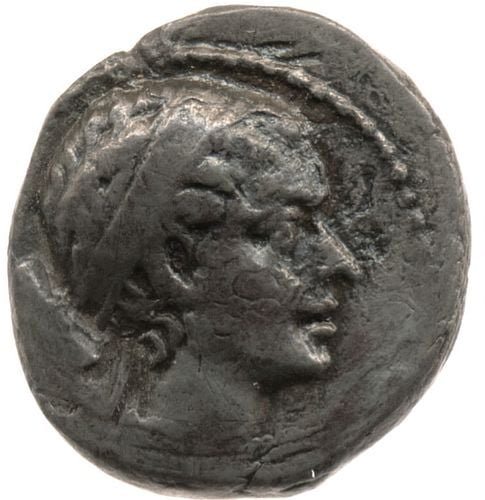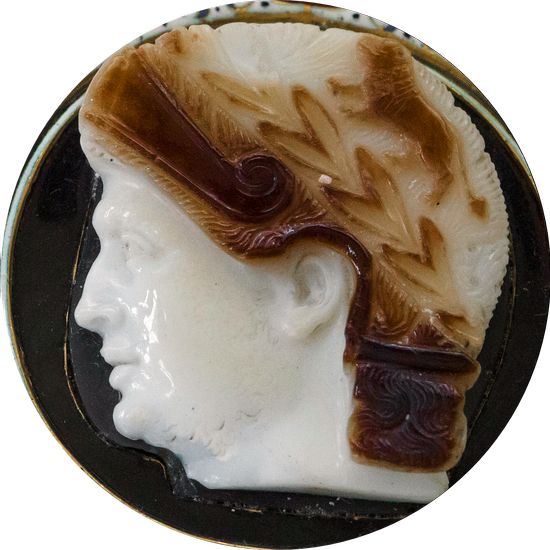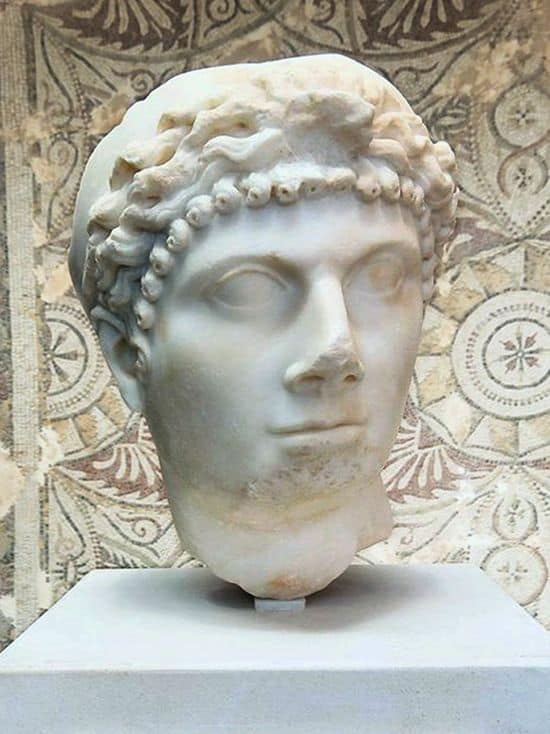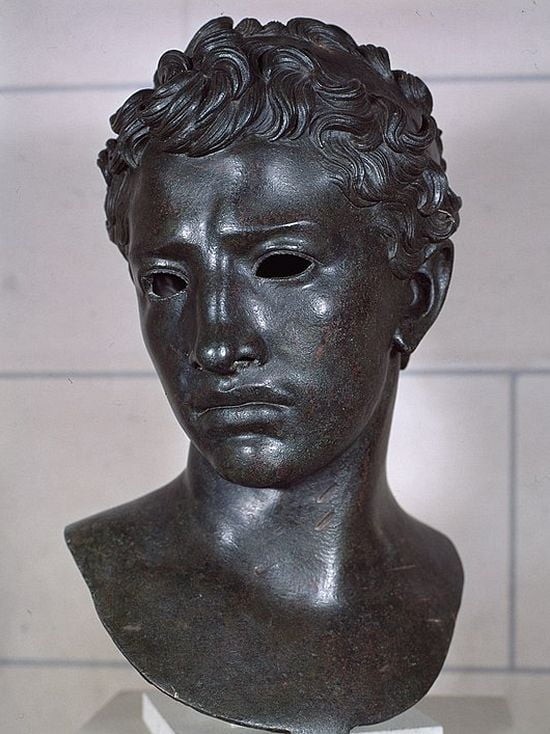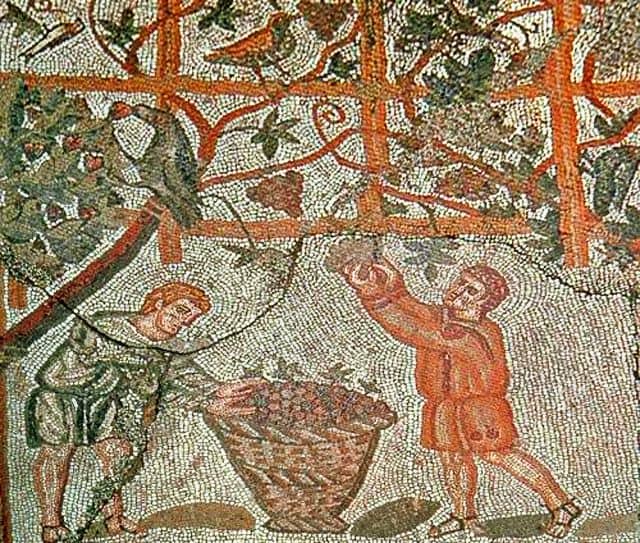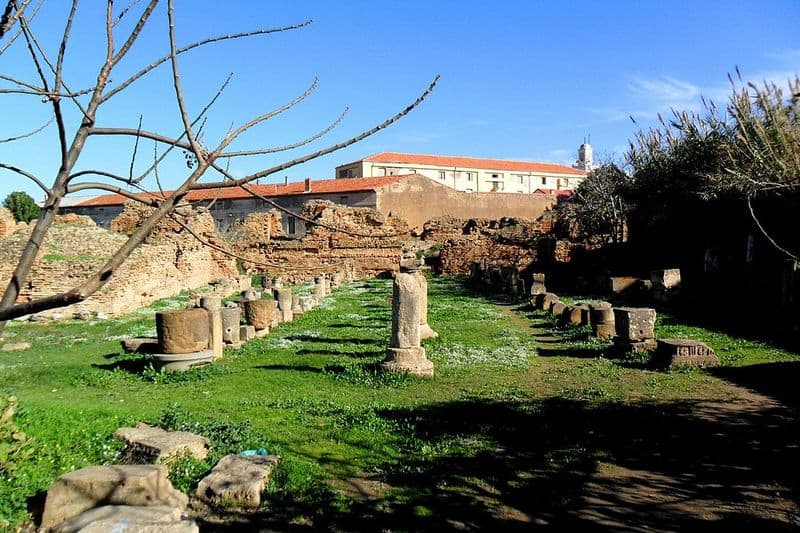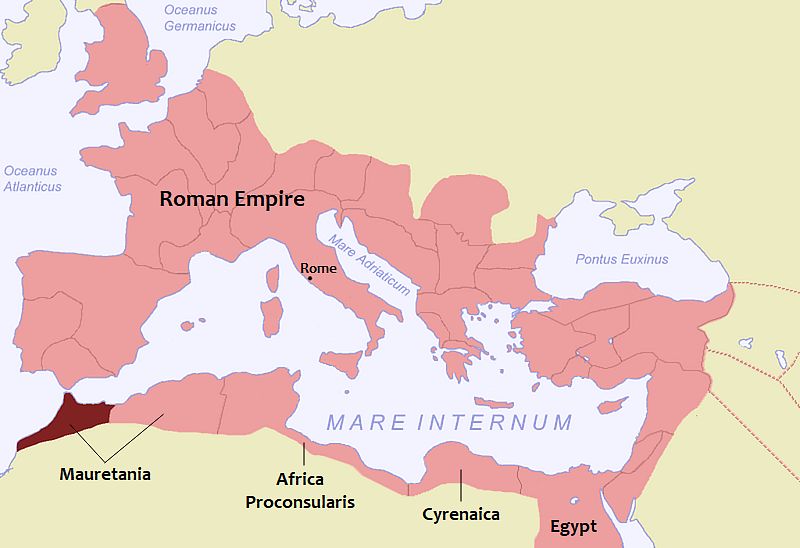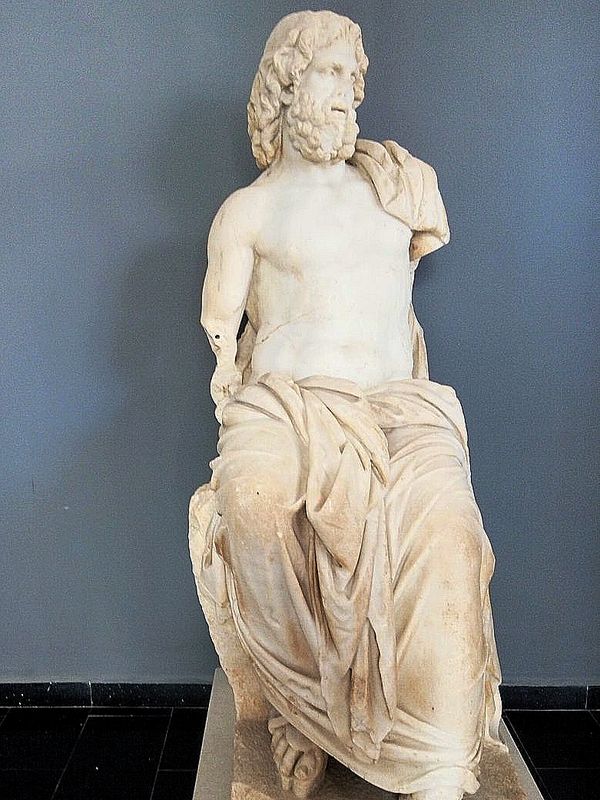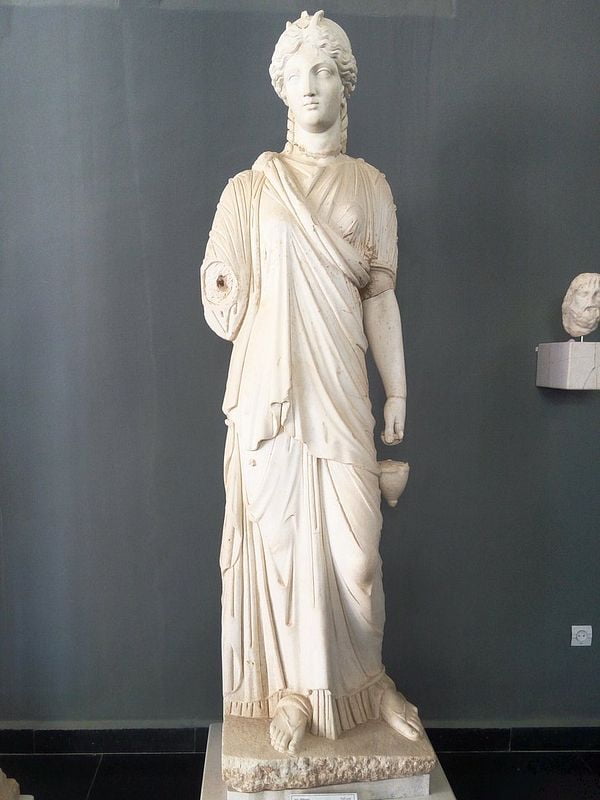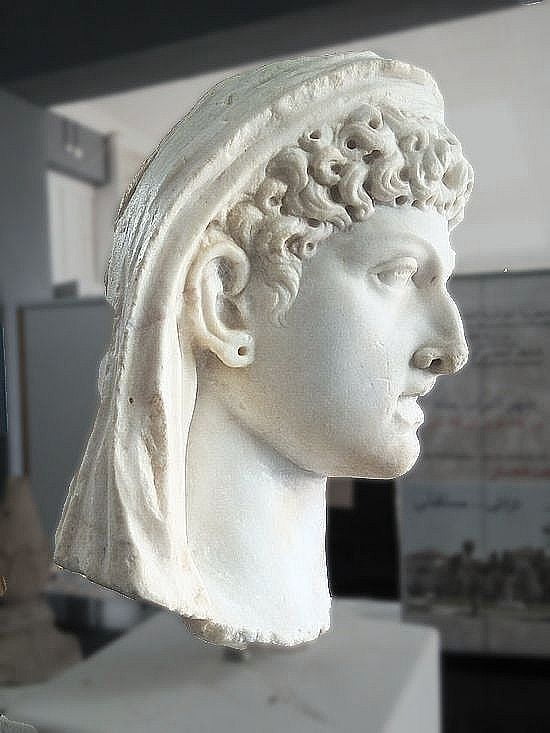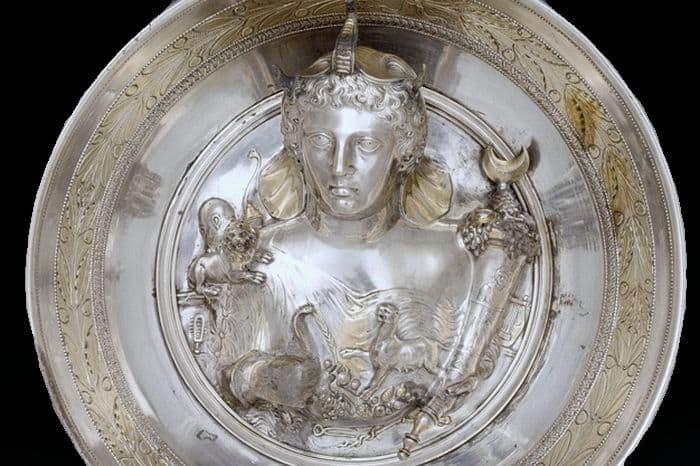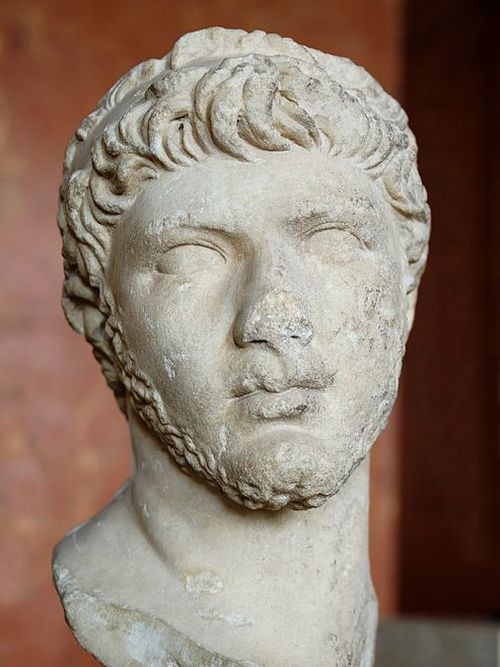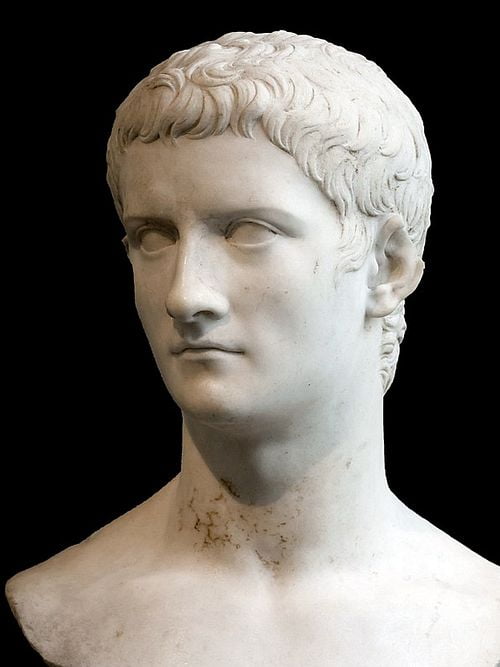Cleopatra Selene was the daughter of the famous Cleopatra. But that is not her only claim to fame. Selene was also the queen of Mauretania. And she led a pretty interesting life herself.
Here are 12 facts about Queen Cleopatra Selene and her roller-coaster life:
1. Cleopatra Selene had famous parents
Cleopatra Selene’s parents were Cleopatra and Mark Antony.
Cleopatra Selene was the daughter of Cleopatra and Mark Antony.
Her mother needs little introduction. And her father, Antony, was one of the most powerful men in Rome.
Selene’s parents began a passionate affair in 41 BC. It lasted a year.
Soon after Antony left, Cleopatra gave birth to twins. The babies were born in 40 BC in Alexandria, the capital of Egypt.
She named her daughter Cleopatra Selene and her son Alexander Helios. Selene means ‘moon’ in Greek, and helios means ‘sun.’
But Cleopatra did not come up with the celestial name of Selene all by herself. She copied the name of one of her powerful relatives, a queen of Egypt and Syria, who had been called Cleopatra Selene.
2. Antony officially recognized Cleopatra Selene when she was three

This sandstone sculpture probably represents the twins. Selene is on the left with a moon above her head. Statue from c. 40 BC found in Dendera, Egypt. On display at Cairo’s Egyptian Museum.
Three years after leaving Cleopatra, Antony needed the money and resources of wealthy Egypt to finance his military campaigns.
So he summoned Cleopatra to Syria.
Cleopatra showed up with the three-year-old twins. Selene’s parents resumed their torrid affair, and Antony recognized the children as his. He got his money too.
From then on, Selene’s parents were an item. And somewhere down the line, they got married.
3. Cleopatra Selene became a queen at six

Cleopatra Selene was raised in utter wealth. Her parents gave splendid banquets and flaunted their riches. “The Banquet of Cleopatra” by Giovanni Battista Tiepolo, 1744. (Photo: National Gallery of Victoria/Public domain)
Cleopatra Selene grew up in Alexandria, in the palace.
She received a Greek education and was brought up like a powerful and exceedingly wealthy Ptolemaic princess (in today’s money, Cleopatra would be a billionaire like Jeff Bezos).
And when Selene was six years old, her grandiose parents promoted her from princess to queen.
Her father Antony had returned from campaigning in the east. And he decided to celebrate his triumph in Alexandria.
It was a great affair, the whole royal family of Egypt was in attendance. Cleopatra dressed as the goddess Isis and sat on a golden throne next to Antony. Their three children, including Cleopatra Selene, sat on lower thrones.
Antony gave to Cleopatra and their children some territories Rome held in the east.
Cleopatra Selene was made queen of Cyrenaica. Cyrenaica was a territory in North Africa, near Egypt. Since Selene was still a child, her mother ruled it in her name.
4. Cleopatra Selene was paraded through the streets of Rome as a captive

But the bliss did not last long. When Cleopatra Selene was 10 years old, her world fell apart.
Her parents had gone to war against Octavian, a powerful Roman. And in 31 BC, they had lost the war for good.
Almost a year later, in August 30 BC, Octavian arrived in Alexandria. So Antony and Cleopatra killed themselves.
Cleopatra Selene was not in the capital when all that happened. Her mother had dispatched her to Thebes, an ancient city in the south of Egypt, to keep her safe. But the orphaned girl was soon brought back to Alexandria by Octavian.
Octavian also captured Selene’s half-brothers. He killed them both: Cleopatra’s oldest son by Julius Caesar, Caesarion, and Antony’s oldest son, Antyllus.
But he did spare the children Cleopatra and Antony had together, probably because they were so young.
According to the historians, Octavian treated the children well in Egypt. But it must not have been easy for 10-year-old Selene to lose her parents and brothers and then be at the mercy of their killer.
Octavian took Cleopatra Selene and her brothers to Rome and displayed them in his triumph, as captives. Selene appeared on the third day of the triumph.
She was dressed as the moon, while her brother Helios was dressed as the sun. They were both covered in heavy gold chains. And they walked the streets of Rome next to a statue that showed their mother killing herself with an asp. The twins were surrounded by the magnificent Egyptian booty. And Octavian’s triumphal chariot came after them.
Cleopatra’s Children -Here is What Happened to Them
5. Selene was raised by her enemies

After the triumph, some sources say Octavian was going to kill the children, but his sister Octavia intervened in their favor.
Octavia had a reputation for kindness. She had been Antony’s fourth wife. Antony divorced her to marry Cleopatra. Yet, even after being discarded, Octavia kept raising Antony’s children from his previous marriages.
So now, Octavia welcomed his three youngest children into her house and raised them as her own. The ancient sources say that even Octavian treated them as his kin.
But still, once more, it could not have been easy for Selene. She was now living with the family that had killed her own. Talk about Stockholm syndrome.
Selene grew up with her half-brother Iullus (a son of Antony and Fulvia that Octavia had been raising), her half-sisters (the daughters of Antony and Octavia), her two full brothers, and with other kids that lived in Octavia’s house -like Octavia’s children from a previous marriage.
Octavia’s house was in the Palatine Hill, Rome’s poshest neighborhood. In a nearby house lived Octavian with his wife Livia and their children, including future emperor Tiberius.
During her time there, Selene kept receiving a great education. But this time it was a Greco-Roman one.
Selene lived with Octavia for five years, until she was fifteen.
6. Peas in a pod: Selene’s husband had a similar background to hers
Cleopatra Selene (left) and her husband Juba (right). Juba was a Berber prince of Numidia. Like Selene, he was paraded in a Roman triumph. And then he was raised in the house of his parents’ enemies in Rome.
When Cleopatra Selene was of marriageable age, Octavia had an idea. She thought Prince Juba would be a great match for the princess.
Juba’s father, King Juba I of Numidia, had fought against Julius Caesar. When Juba lost, he killed himself, leaving his baby son, Juba, orphaned.
Caesar had taken the baby to Rome and had raised him in his household. After Caesar died, Caesar’s relatives took in Juba. Some say he lived with Octavian, others that he ended up living with Octavia.
Later on, young Juba campaigned with Octavian, and they became good friends. Octavian rewarded him by giving him his kingdom back.
So when Octavia proposed Juba married Selene, Octavian agreed. He gave Selene an impressive dowry, which included Mauretania, a country in North Africa.
The couple got married in 25 BC. Selene was 15, and her dashing husband was about 25.
Since Juba was raised by either Octavian or Octavia, Selene probably knew him well before they married.
The Romans did not miss that the new couple had a lot of similarities. They were both North African royals, their parents had lost to Rome and had killed themselves, Selene and Juba had been left orphaned, had been taken to Rome, paraded on a triumph, raised in the house of their parents’ enemies, and received Roman educations.
Four Awe-inspiring, Ancient African Kingdoms That Nobody Told You About
7. Selene’s husband helped defeat her parents

Octavian defeated Cleopatra and Antony in the Battle of Actium (pictured). Juba fought on Octavian’s side. Cleopatra is seen fleeing on the left. “The Battle of Actium, 2 September 31 BC” by Lorenzo Castro, 1672. National Maritime Museum, London, England. (Photo: Wikimedia/Public domain)
Juba fought alongside Octavian in many wars, including the Battle of Actium.
And it was in Actium that Octavian defeated Cleopatra and Antony for good. Eleven months later, the couple killed themselves.
8. Cleopatra Selene was brainy, like her mother
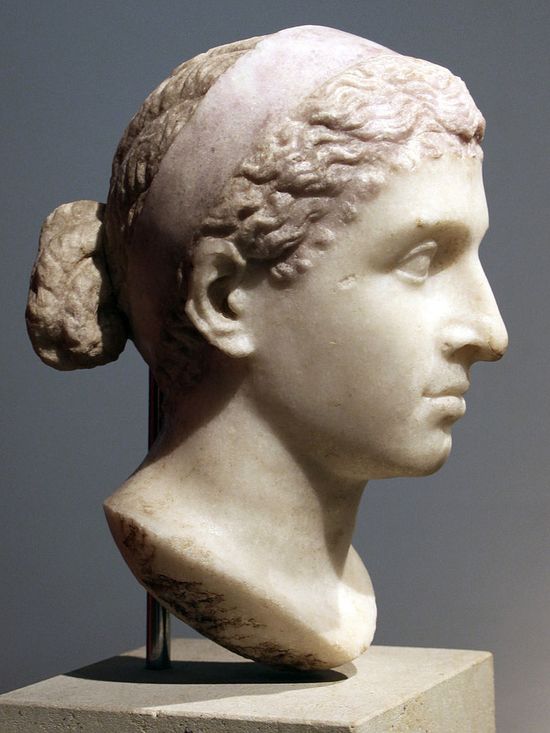
Cleopatra of Egypt was, even by the account of her Western enemies, an intelligent woman.
She spoke several languages, was fully versed in Greek culture, understood chemistry, medicine, alchemy, and other sciences. She was said to be an extraordinary conversationalist.
In the east, her reputation as an intellectual was even greater. Arab historian Al-Maudi described her as: “A sage, a philosopher who elevated the ranks of scholars and enjoyed their company. She also wrote books on medicine, charms and cosmetics, in addition to many other books ascribed to her which are known to those who practice medicine.”
And her daughter, Cleopatra Selene, seems to have inherited her intellectual gifts. She was interested in the arts, architecture, religion, and other subjects.
That is one more thing Selene had in common with her husband Juba. He, too, was brainy and a great scholar.
Want to Know What Cleopatra Really Looked Like? Here Are Her Statues and Coins
9. Cleopatra Selene was a good queen
Juba and Selene made their country prosperous through exports like grapes. They were also prolific builders. They commissioned theaters, aqueducts, baths, gymnasiums, libraries, lighthouses. And they were patrons of the arts.
Selene co-ruled with her husband. And the duo turned out to be great administrators.
Octavian gave the west half of Numidia to Juba since that had been his country. And then he gave neighboring Mauretania to Selene as dowry.
So the couple ruled over both territories, which were united and called Mauretania.
Mauretania was vast. And the monarchs made it rich through trade. They produced an expensive dye called Tyrian purple that was coveted in the Roman Empire. They also exported timber, grapes, grains, pearls, fish, and garum -a fish sauce that was ultra-popular in Rome.
They embarked on an extensive building program. To urbanize their nomadic country, they built new cities. And they gave new buildings to the existing cities.
The duo built Roman theaters, aqueducts, and baths, Greek gymnasiums, temples to Egyptian and Roman deities, palaces. And they also built libraries and a lighthouse.
Those last two, the libraries and the lighthouse, are particularly telling about Selene’s influence. Both were copied from landmarks in Alexandria, Selene’s hometown. Alexandria had a famous library. And Alexandria’s lighthouse, the Pharos, was considered one of the 7 wonders of the world.
Culturally and architecturally, the couple combined Egyptian, Greek, and Roman elements.
The pair were also fond of Greek sculpture and had hundreds of statues made. The artworks must have been used to decorate their new buildings.
And Selene lured to Mauretania the scholars and artists that had lived in her mother’s court.
Find Out Which Big Cities Were Thriving 4,000 Years Ago
10. Selene and Juba quenched insurrections
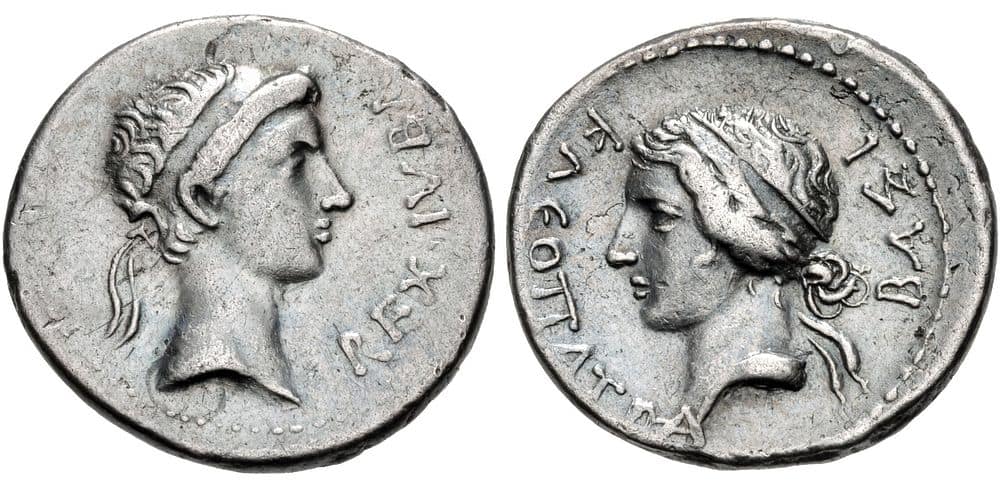
Selene and Juba introduced many changes to Mauretania. So the traditionalists rebelled more than once. Juba II (left) and Cleopatra Selene II (right) as king and queen of Mauretania. Juba issued the coin.
Yet, not everyone in Mauretania was a fan of Selene and Juba’s Roman ways.
As seen above, the people of Mauretania were mostly nomads, and the monarchs were trying to get them to settle down in cities. The rulers also imported foreign gods (Greek, Roman, Egyptian), foreign ideas, building types…
The locals had their own way of life, and some of them were not keen on these imports.
So even though Juba was a Berber like them, his people rebelled against him and Selene more than once.
Yet, Selene and Juba were committed to Roman ideas/culture. And they, wisely, remained steadfast allies of Rome.
To show their loyalty to the empire, they even renamed their capital Caesaria (modern Cherchell, in Algeria). The move was meant to honor Octavian, the ruler of Rome, who had changed his name to Caesar Augustus.
11. It is not clear in which year Cleopatra Selene died
Two possible portraits of Cleopatra Selene.
There is news of Queen Cleopatra Selene until 5 BC. Then, silence. And the following year, in 4 BC, Juba took a new wife.
So many scholars believe that Selene died in 5 BC. She was 35 then and had been ruling with her husband for 20 years.
But that she died then is only one possibility. Maybe Juba and Selene just grew apart, and Juba took a second wife without divorcing Selene, which was a custom of his country. That would explain why she disappears from the records.
Other scholars think that a probable date for Selene’s death is AD 8. She could have died as late as AD 14.
A poet –Crinagoras of Mytilene– wrote an epigram about her death. In it, he says that Selene died during a lunar eclipse.
The moon herself, rising at early eve, dimmed her light,
Greek Anthology, translated by WR Paton
veiling her mourning in night,
because she saw her namesake, pretty Selene,
going down dead to murky Hades.
On her she had bestowed the beauty of her light,
and with her death she mingled her own darkness.
If Crinagoras was being factual and not just poetic about the eclipse, Selene could have died in the years: 5 or 1 Before Christ, AD 3, 7, 10, 11, or 14.
12. Cleopatra Selene and Juba were buried together

The tomb where Selene and Juba were buried. It is in modern Cherchell, Algeria. (Photo: Mohammed Salah Brahmi/Google Maps)
Juba built a round mausoleum near his capital, Caesaria (modern Cherchell, in Algeria). Both Selene and Juba were buried there.
The mausoleum still stands. But Selene and Juba’s remains are long lost along with the treasure that was probably buried there.
Aaand an extra fact because we like you:
Bonus: Cleopatra Selene’s son was killed by Caligula
Selene’s son Ptolemy (left) became king of Mauretania. He ruled for 15 years. Then, he was murdered by his cousin Caligula (right).
Cleopatra Selene and Juba had at least one child: Ptolemy of Mauretania.
They named him Ptolemy, which was the name given to the males of Cleopatra’s family. It was an unusual move and showed how much power Cleopatra Selene wielded. The boy would have usually been named after his father’s family.
After Juba died in AD 24, Ptolemy became king.
Ptolemy was murdered fifteen years later by his cousin Caligula, the Roman emperor (they both descended from Mark Antony).
More Articles
